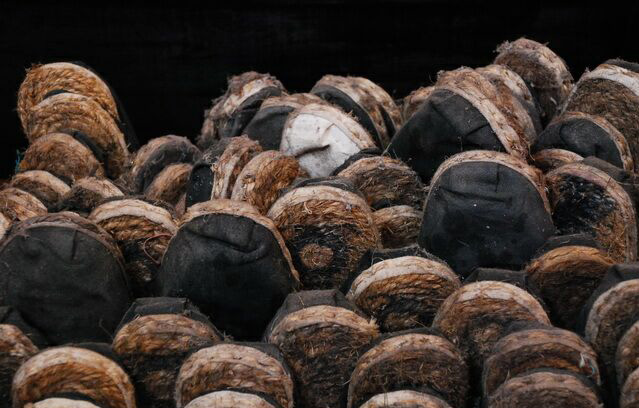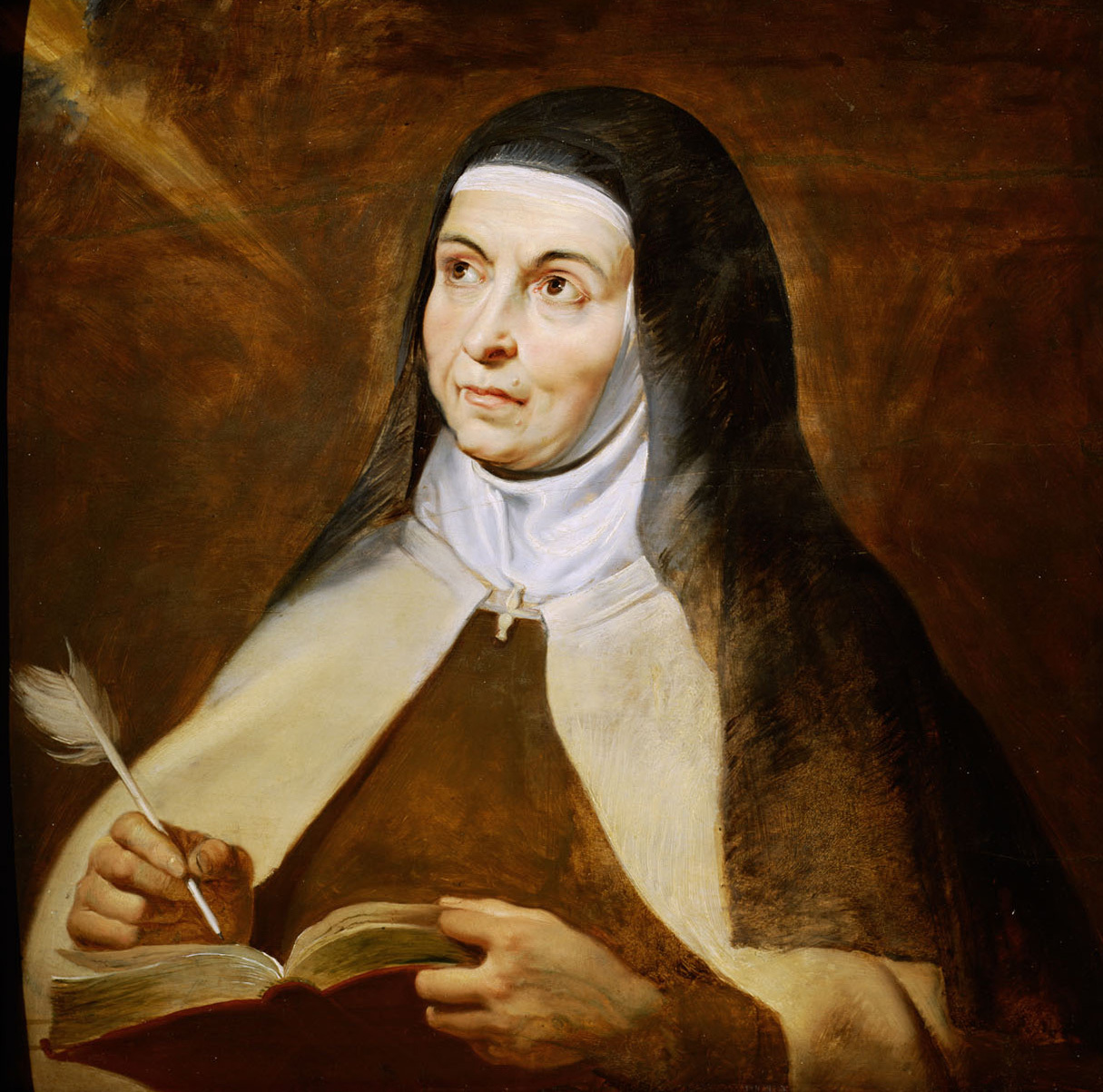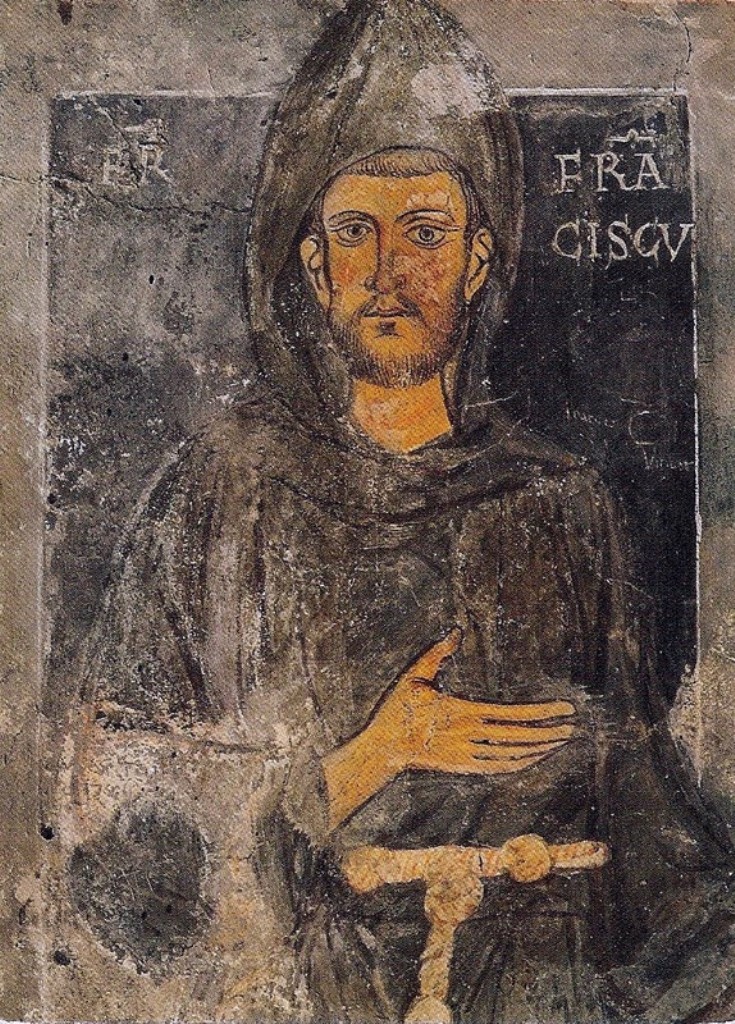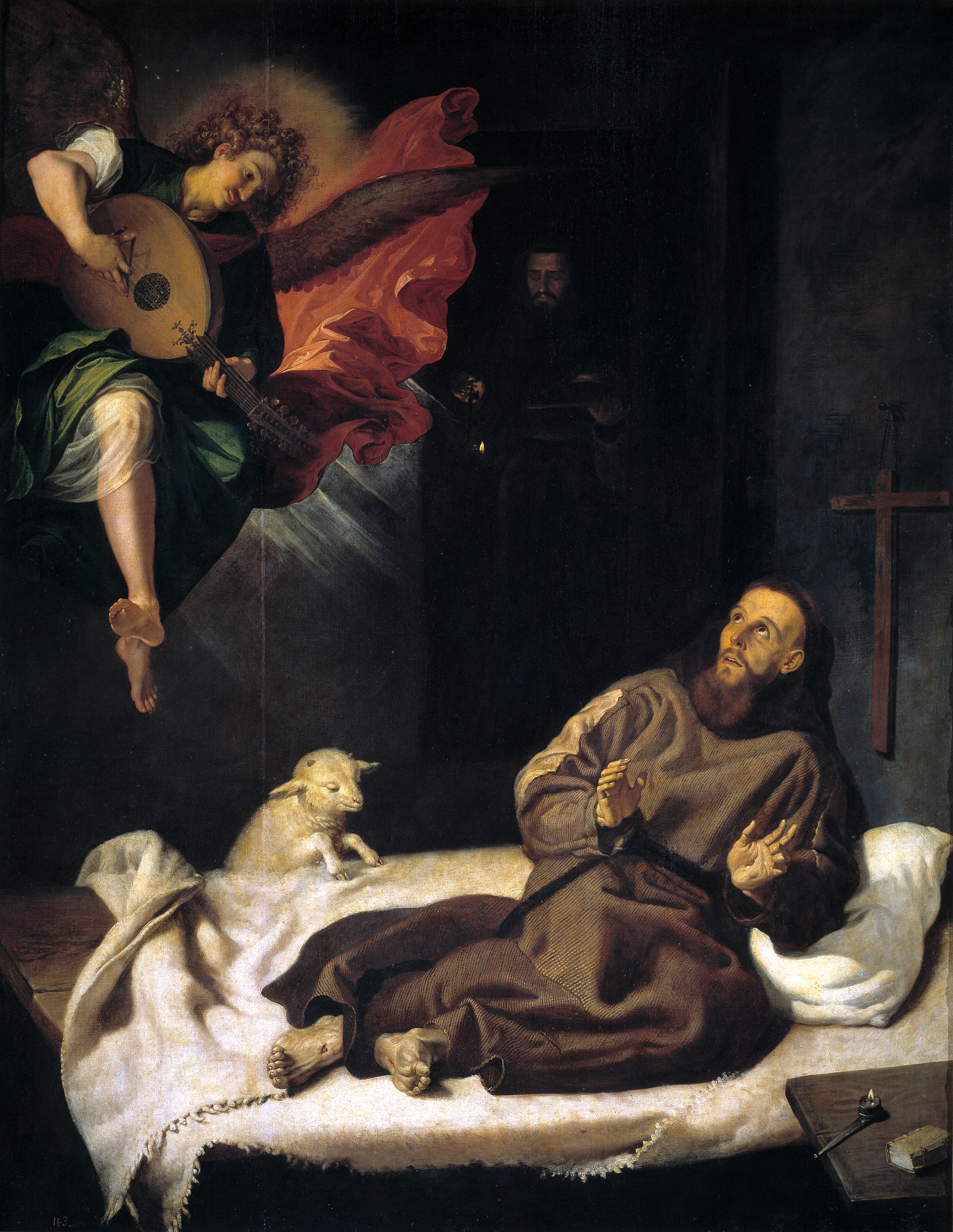|
Discalced
A discalced (/dɪsˈkælst/, ''dis-KALST'') religious order is one whose members go barefoot or wear sandals. These orders are often distinguished on this account from other branches of the same order. The custom of going unshod was introduced into the West by Saint Francis of Assisi for men and by Saint Clare of Assisi for women. The word is derived from the Latin ''discalceātus'', from ''dis'' ("apart", "away") and wikt:calceatus, ''calceātus'' ("shod"), from wikt:calceare, ''calceāre'' ("to provide with shoes"), from wikt:calceus, ''calceus'' ("shoe"), from ''calx'' ("heel"). Discalceation Discalceation means "removal of footwear". The nuns in the Carmelite reform convents erected by Teresa of Ávila abstained from wearing shoes, and were therefore indicated as ''discalced''. She and St. John of the Cross were the founders of the Discalced Carmelites. The origins of discalceation lie in Book of Exodus, Exodus 3:5, where God tells Moses: "Take off your sandals, for the pla ... [...More Info...] [...Related Items...] OR: [Wikipedia] [Google] [Baidu] [Amazon] |
Discalced Carmelites
The Discalced Carmelites, known officially as the Order of the Discalced Brothers of the Blessed Virgin Mary of Mount Carmel () or the Order of Discalced Carmelites (; abbreviation, abbrev.: OCD; sometimes called in earlier times, ), is a Catholic Church, Catholic mendicant order with roots in the hermit, eremitic tradition of the Desert Fathers. The order was established in the 16th century, pursuant to the reform of the Carmelites, Carmelite Order by two Spain, Spanish saints, Teresa of Ávila (foundress) and John of the Cross (co-founder). ''Discalced'' is derived from Latin, meaning "without shoes". The Carmelite Order, from which the Discalced Carmelites branched off, is also referred to as the Carmelites of the Ancient Observance to distinguish them from their discalced offshoot. The third order affiliated to the Discalced Carmelites is the Secular Order of Discalced Carmelites. Background The Discalced Carmelites are friars and nuns who dedicate themselves to a life of ... [...More Info...] [...Related Items...] OR: [Wikipedia] [Google] [Baidu] [Amazon] |
Discalced Augustinians
The Order of Discalced Augustinians (; abbreviation: OAD) is a mendicant order that branched off from the Order of Saint Augustine as a reform movement. History During the Counter-Reformation, there was a special interest among the Augustinian friars in the theological debates of the day, as well as a need to return to the roots of their way of life. In an effort to seek a more simple and spiritual life, various friars banded together and followed a pattern seen in other mendicant orders, in which simplicity of dress and a stricter form of a life of prayer and penance were embraced. The Discalced Augustinians were formed in 1610 in Italy as a reform movement of the Order and have their own constitutions, differing from those of the other Augustinians. Among the Augustinians, there also was an effort to return to the eremitical origins of their Order. Their fasts are more rigorous and their other ascetic practices stricter. As with the Carmelite reform of the same period ... [...More Info...] [...Related Items...] OR: [Wikipedia] [Google] [Baidu] [Amazon] |
Minim (religious Order)
The Order of Minims (; abbreviated OM), known in German-speaking countries as the Paulaner Order (), are a religious order of friars in the Catholic Church, founded by Francis of Paola in fifteenth-century Italy. The order soon spread to France, Germany and Spain, and continues to exist today. Like the other mendicant orders, there are three separate components, or orders, of the movement: the friars, contemplative nuns and a Third Order of Laity, laypeople who live in the spirit of the order in their daily lives. At present there are only two fraternity, fraternities of the Minim third order, tertiaries; both are in Italy. History The founder of the order, Francis of Paola, was born in 1416 and named in honor of Francis of Assisi. The boy became ill when he was only one month old, and his mother prayed to Saint Francis and promised that her son would spend a year in a Franciscan friary if he were healed. Francis recovered, which she believed meant that God had granted her praye ... [...More Info...] [...Related Items...] OR: [Wikipedia] [Google] [Baidu] [Amazon] |
Calceus
The calceus (: calcei) was the common social class in ancient Rome, upper-class male footwear of the Roman Republic and Roman Empire, Empire. Normally made of leather and hobnailed, it was flat sole (shoe), soled and typically reached the lower shin (leg), shin, entirely covering the foot and ankle. It was secured with crossed thongs or laces. Equivalent to a short boot or high-top shoe, it was lighter than the Ancient Roman military clothing, military caliga but sturdier than slip-on shoes like the soccus and able to easily handle outdoor use. Name The Latin language, Latin word derives from ("heel") and the usually Grecian suffix , meaning essentially "heely" or "thing for the heel". It is frequently taken loosely as the general Latin word for any laced and covered shoe distinguished from sandals, slippers, and boots. Theodor Mommsen even considered it to sometimes intend sandals as well. Similarly, medieval Latin used the adjective to indicate both mendicant orders which ... [...More Info...] [...Related Items...] OR: [Wikipedia] [Google] [Baidu] [Amazon] |
Order Of Friars Minor Capuchin
The Order of Friars Minor Capuchin (; postnominal abbr. OFMCap) is a religious order of Franciscan friars within the Catholic Church, one of three " First Orders" that reformed from the Franciscan Friars Minor Observant (OFMObs, now OFM), the other being the Conventuals (OFMConv). Franciscans reformed as Capuchins in 1525 with the purpose of regaining the original Habit (tunic) of St. Francis of Assisi and also for returning to a stricter observance of the rule established by Francis of Assisi in 1209. History Origins The Order arose in 1525 when Matteo da Bascio, an Observant Franciscan friar native to the Italian region of Marche, said he had been inspired by God with the idea that the manner of life led by the friars of his day was not the one which their founder, St. Francis of Assisi, had envisaged. He sought to return to the primitive way of life of solitude and penance, as practised by the founder of their Order. His religious superiors tried to suppress the ... [...More Info...] [...Related Items...] OR: [Wikipedia] [Google] [Baidu] [Amazon] |
Thomas Of Jesus
Thomas of Jesus OAD, (Lisbon, 1529 – Morocco, April 17, 1582), also known as ''Tome de Jesus'' and ''Tomé de Andrade'', was a reformer and preacher, instrumental in creating the Discalced Augustinians. Life Thomas of Andrada was born in Lisbon in 1529, and "belonged to one of the most illustrious house of Portugal". Thomas joined the Order of Saint Augustine at the age of fifteen and took the religious name ''Thomas of Jesus''. His attempts to reform the order met with little success as his zeal for a stricter observance only raised violent opposition and hardship for himself, and he was forced to desist. Nonetheless, after his death the regulations he had proposed were later adopted by those Augustinians who formed the discalced branch. He was a chaplain with Sebastian of Portugal's campaign against Morocco in 1578. According to Henry Edward Manning, Thomas was "mixing with the gay and nobles and soldiery" with the mission "to nurse the sick and tend the wounded", and t ... [...More Info...] [...Related Items...] OR: [Wikipedia] [Google] [Baidu] [Amazon] |
John Of The Cross
St. John of the Cross (; ; né Juan de Yepes y Álvarez; 24 June 1542 – 14 December 1591) was a Spanish Roman Catholic priest, mystic, and Carmelite friar of ''Converso'' ancestry. He is a major figure of the Counter-Reformation in Spain, and he is one of the 37 Doctors of the Church. John of the Cross is known for his writings. He was mentored by and corresponded with the older Carmelite nun Teresa of Ávila. Both his poetry and his studies on the development of the soul, particularly his '' Noche Obscura'', are considered the summit of mystical Christian literature and among the greatest works of all Spanish literature. He was canonized by Pope Benedict XIII in 1726. In 1926, he was declared a Doctor of the Church by Pope Pius XI, and is also known as the "mystical doctor". Life Early life and education He was born Juan de Yepes y Álvarez at Fontiveros, Old Castile, into a "New Christian" family of ''Converso'' origins (descendants of Iberian Jewish converts ... [...More Info...] [...Related Items...] OR: [Wikipedia] [Google] [Baidu] [Amazon] |
Spain
Spain, or the Kingdom of Spain, is a country in Southern Europe, Southern and Western Europe with territories in North Africa. Featuring the Punta de Tarifa, southernmost point of continental Europe, it is the largest country in Southern Europe and the fourth-most populous European Union member state. Spanning across the majority of the Iberian Peninsula, its territory also includes the Canary Islands, in the Eastern Atlantic Ocean, the Balearic Islands, in the Western Mediterranean Sea, and the Autonomous communities of Spain#Autonomous cities, autonomous cities of Ceuta and Melilla, in mainland Africa. Peninsular Spain is bordered to the north by France, Andorra, and the Bay of Biscay; to the east and south by the Mediterranean Sea and Gibraltar; and to the west by Portugal and the Atlantic Ocean. Spain's capital and List of largest cities in Spain, largest city is Madrid, and other major List of metropolitan areas in Spain, urban areas include Barcelona, Valencia, Seville, ... [...More Info...] [...Related Items...] OR: [Wikipedia] [Google] [Baidu] [Amazon] |
Alcantarines
The Order of Friars Minor (commonly called the Franciscans, the Franciscan Order, or the Seraphic Order; postnominal abbreviation OFM) is a mendicant Catholic religious order, founded in 1209 by Francis of Assisi. The order adheres to the teachings and spiritual disciplines of the founder and of his main associates and followers, such as Clare of Assisi, Anthony of Padua, and Elizabeth of Hungary, among many others. The Order of Friars Minor is the largest of the contemporary First Orders within the Franciscan movement. Francis began preaching around 1207 and traveled to Rome to seek approval of his order from Pope Innocent III in 1209. The original Rule of Saint Francis approved by the pope disallowed ownership of property, requiring members of the order to beg for food while preaching. The austerity was meant to emulate the life and ministry of Jesus Christ. Franciscans traveled and preached in the streets, while boarding in church properties. The extreme poverty required ... [...More Info...] [...Related Items...] OR: [Wikipedia] [Google] [Baidu] [Amazon] |
Alpargatas 02
Espadrilles ( or ; ; ; ; ) are casual, rope-soled, flat but sometimes high-heeled shoes. They usually have a canvas or cotton fabric upper and a flexible sole made of esparto rope. The esparto rope sole is the defining characteristic of an espadrille; the uppers vary widely in style. Espadrilles are a typical form of Spanish summer footwear, with strong historical ties to the regions of Catalonia, Aragon, and the Basque Country. The word derives from the Catalan and refers to esparto grass, a plant indigenous to the south of Spain that is used to make ropes and basketry. Although they are still widely manufactured in Spain, some production has moved to Bangladesh, the world's largest jute producer. Originally peasant footwear, they were popularised throughout the 20th century by many cultural figures including Picasso, Salvador Dalí and later John F. Kennedy and Yves Saint Laurent. Etymology The existence of this kind of shoe in Europe is documented since at least ... [...More Info...] [...Related Items...] OR: [Wikipedia] [Google] [Baidu] [Amazon] |
Camaldolese
The Camaldolese Hermits of Mount Corona () are a Catholic Church, Catholic monastic order of pontifical right for men founded by Romuald, St. Romuald. Its name is derived from the Holy Hermitage () in Camaldoli, high in the mountains of Tuscany, Tuscany, Italy, near the city of Arezzo. Members of that community add the postnominal letters ECMC after their names. A second community, the Benedictine Camaldolese, are also based at Camaldoli and add the postnominals OSB Cam. Apart from the Catholic monasteries, ecumenical Christian hermitages with a Camaldolese spirituality have arisen as well. History The Camaldolese were established through the efforts of the Italian people, Italian monk Saint Romuald (). His reform sought to renew and integrate the hermit, eremitical tradition of monastic life with that of the cenobium. In his youth, Romuald became acquainted with the three major schools of Western monastic tradition. The monastery where he first entered monastic life, Basilica ... [...More Info...] [...Related Items...] OR: [Wikipedia] [Google] [Baidu] [Amazon] |
Franciscan Order
The Franciscans are a group of related organizations in the Catholic Church, founded or inspired by the Italian saint Francis of Assisi. They include three independent Religious institute, religious orders for men (the Order of Friars Minor being the largest contemporary male order), an order for nuns known as the Order of Saint Clare, and the Third Order of Saint Francis, a Third Order of Saint Francis#Third Order Regular, religious and Secular Franciscan Order, secular group open to male and female members. Franciscans adhere to the teachings and spiritual disciplines of the founder and of his main associates and followers, such as Clare of Assisi, Anthony of Padua, and Elizabeth of Hungary. Several smaller Franciscan spirituality in Protestantism, Protestant Franciscan orders have been established since the late 19th century as well, particularly in the Lutheranism, Lutheran and Anglicanism, Anglican traditions. Certain Franciscan communities are ecumenism, ecumenical in nat ... [...More Info...] [...Related Items...] OR: [Wikipedia] [Google] [Baidu] [Amazon] |





